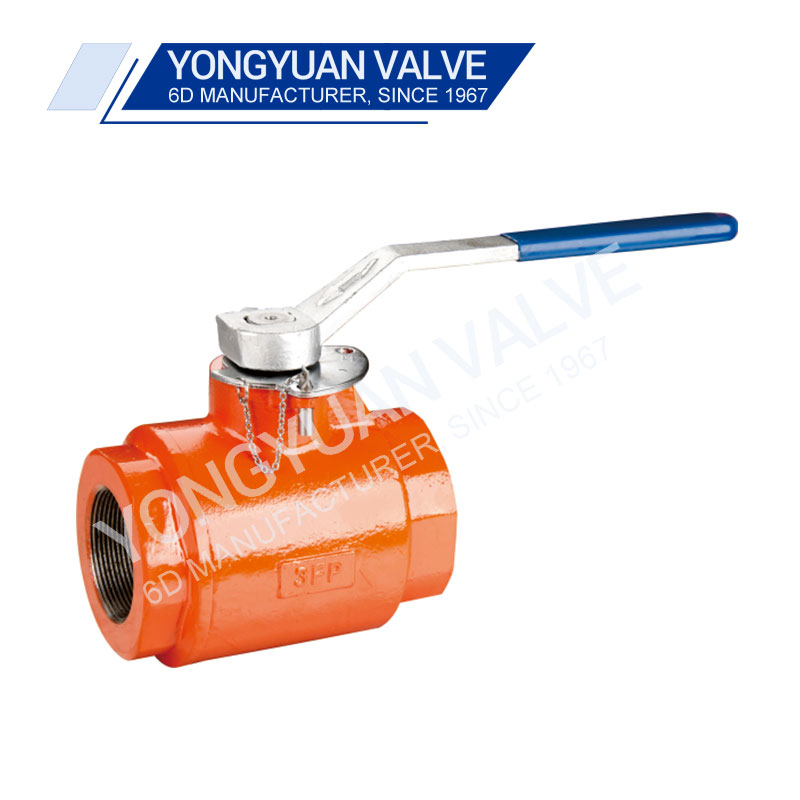What are the different types of ball valves
2023-10-27
Ball valves come in various types and configurations to suit different applications and operational needs. The main types of ball valves include:
1. Two-Way or Shut-Off Ball Valves (2-Port):
- These are the most common type of ball valve and are used for on/off control of fluid flow.
- They have two ports, an inlet, and an outlet.
- In the open position, the fluid flows through the valve, and in the closed position, the flow is blocked.
2. Three-Way Ball Valves (3-Port):
- Three-way ball valves have three ports: an inlet and two outlets (often referred to as the A, B, and C ports).
- They are used to control the direction of flow or to divert flow between two outlets.
- Common configurations include T-port and L-port three-way valves.
3. Multi-Port Ball Valves:
- Multi-port ball valves have more than three ports, allowing for various flow path configurations.
- They can be used for complex flow control applications, mixing, or distribution of fluids.
4. V-Port Ball Valves:
- V-port ball valves have a ball with a V-shaped bore instead of a circular bore.
- They are used for precise flow control in applications requiring throttling or modulating control.
5. Cavity Filler Ball Valves:
- These ball valves have a cavity relief mechanism to prevent pressure buildup in the cavity between the ball and seats when the valve is closed. This feature is essential in preventing valve damage due to pressure differentials.
6. Floating Ball Ball Valves:
- In floating ball valves, the ball is not fixed to the stem but is free to move within the valve body.
- The seats are typically soft and resilient, providing a seal when compressed against the ball.
- Floating ball valves are suitable for moderate-pressure applications.
7. Trunnion-Mounted Ball Valves:
- Trunnion-mounted ball valves have a ball with trunnions (fixed shafts) at the top and bottom.
- The trunnions support the ball, reducing the pressure on the seats and preventing excessive wear.
- They are used in high-pressure and high-temperature applications.
8. Top-Entry Ball Valves:
- In top-entry ball valves, the valve body can be disassembled from the top for maintenance and repair, making them suitable for large and high-pressure applications.
9. Full-Port (Full-Bore) Ball Valves:
- Full-port ball valves have a larger ball and bore size, allowing for minimal flow restriction.
- They are often used in applications where high flow capacity is required.
10. Reduced-Port (Reduced-Bore) Ball Valves:
- Reduced-port ball valves have a smaller ball and bore size, resulting in some flow restriction.
- They are used when flow capacity is less critical, and cost savings are desired.
11. Fire-Safe Ball Valves:
- Fire-safe ball valves are designed to maintain their sealing capabilities even in the presence of fire or high-temperature conditions. They often include special materials and designs to withstand extreme heat.
12. Sanitary Ball Valves:
- Sanitary ball valves are designed for applications in the food, beverage, pharmaceutical, and biotechnology industries.
- They have smooth and easy-to-clean surfaces and hygienic seals to prevent contamination.
13. Double-Block-and-Bleed (DBB) Ball Valves:
- DBB ball valves have two seating surfaces that provide a double block, effectively isolating the fluid from both the upstream and downstream sides of the valve.
- They are used for applications requiring a high level of isolation and safety.
14. Control Ball Valves:
- Control ball valves are designed for precise flow control and often include a V-port or characterized ball for accurate modulation.
- They are used in applications where flow rate regulation is critical.
15. Jacketed Ball Valves:
- Jacketed ball valves are used in applications where temperature control is necessary.
- The valve has an outer jacket to allow heating or cooling media to maintain the fluid temperature.
The choice of ball valve type depends on the specific application requirements, such as the desired flow control, pressure and temperature conditions, and the need for isolation or regulation. Each type of ball valve offers unique features and benefits to accommodate various industries and applications.



